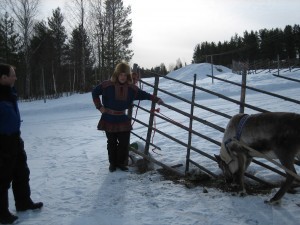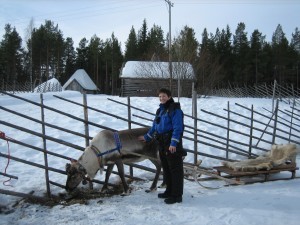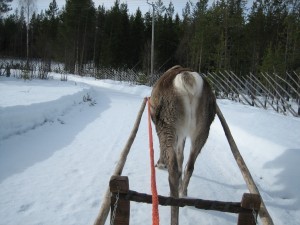The weather outside is cold at the moment. The lakes in Lapland will be covered by ice in the next weeks. Most of all I hope for some weeks with only ice – not snow. Because then I can go ice-skating, which I like very much. Last winter in the beginning of November we had excellent ices on the lakes and I took the opportunity to go ice-skating several times. I have been ice-skating every winter as a child and even now, at this age, I took an ice-skating class here in Rovaniemi some winters ago, just to catch up some old skills and do some exercising. I keep my skates with me in the car wherever I go now, in case I will find a suitable place to do some skating some day. Of course, priority nro 1 is the safety. Never enter an ice you do not know if it is thick enough and safe to enter! Always keep your ice nails with you in case of emergency!
While I am waiting for the winter to bring ice I have finished the bracelet I bought from the Arctic Markets and planned to make myself. It is made from leather and tin thread after a Sami pattern. And I must say: not bad! I like it very much.
Regarding outdoor life on ice a big amount of snow is definitively affecting possibilities to move on the ice. The winters in Lapland always have a lot of snow. One thing is that if there is more than 40 cm of smooth snow on the ice it makes skiing without prepared tracks (not to mention skating) impossible. Even walking is hard work. The snowmobiles are of course able to drive in quite deep snow, but if you want to go ice-fishing you have to shovel the snow away from the place before you can drill the holes in the ice.
There is another problem, too. If the ice is approx. 60 cm thick there is no risk that it breaks, but what happens is, that the big amount of snow weighs a lot and presses the ice down and water begins to rise up on the ice. This happens usually near islands, near the coast or from crevasses anywhere on the ice. Water is also rising through the holes you have made for ice fishing. As there is a lot of snow on the ice you probably do not see the water under the snow. The deep snow prevents the water from freezing even if there are several minus degrees out there. Snow has an isolating function. Animals can hide themselves under the snow and survive from freezing to death. The snow isolates them from the freezing cold.
When driving with the snowmobile you could suddenly realize there is water under the snow on the ice. If you are lucky the area of water is not so large and you can rescue by driving fast over the area. If the area is large and the amount of water under the snow is big you could suddenly find yourself sitting in the water on your snowmobile unable to move forward anymore. The water under the snow has also partly melted the snow.
The first time this happened to me several years ago, I got scared, of course. In my mind water and ice means there must be a hole and I thought I was going to drown in that. But that is absolute not the fact! There is water, all right, but if you wear good rubber boots you are able to walk on the ice in the water. The ice is still 60 cm thick. You’d better not be alone when this happen to you. Because now you have to get the snowmobile away from this water. You are not able to lift the snowmobile all by yourself. It is also good to have a shovel or other implements to your help. By “building” a kind of platform of snow and little by little lifting the snowmobile up on that platform you manage to start the engine again and carefully steer the snowmobile away from the water area. If you are alone, you’d better call for help.
These water areas usually appear in the beginning of winter when the snow cover is growing and they disappear sometimes during the spring season. There are usually no water areas in March and April. If you are driving in the same areas year after year you could learn to know where these places usually appear and you could avoid them. But you could never be 100 % sure because the crevasses could appear anywhere. They are caused by the ice movements that happens when the temperature outside falls and rises.

After the “adventure” in the water the snowmobile is full of wet snow and it will freeze and make it impossible to drive eventually. That is why you have to clean the snowmobile from all ice and snow as soon as possible. One thing that helps is to turn the snowmobile over to ease the cleaning process. This procedure does not harm the snowmobile, but helps you to clean away all snow and ice.
There is also a very useful invention from SOIMET Ky that lifts up the snowmobile from the ground; the snowmobile jack. You could use it out there when you get shucked in the water on the ice to get lifted up so you can build a stable ground under the snowmobile. And you could also use it in cleaning the snowmobile from wet, icy snow after an adventure in the water. You lift up the snowmobile and start the engine. The roller will clean itself from snow while going around lifted up in the air.

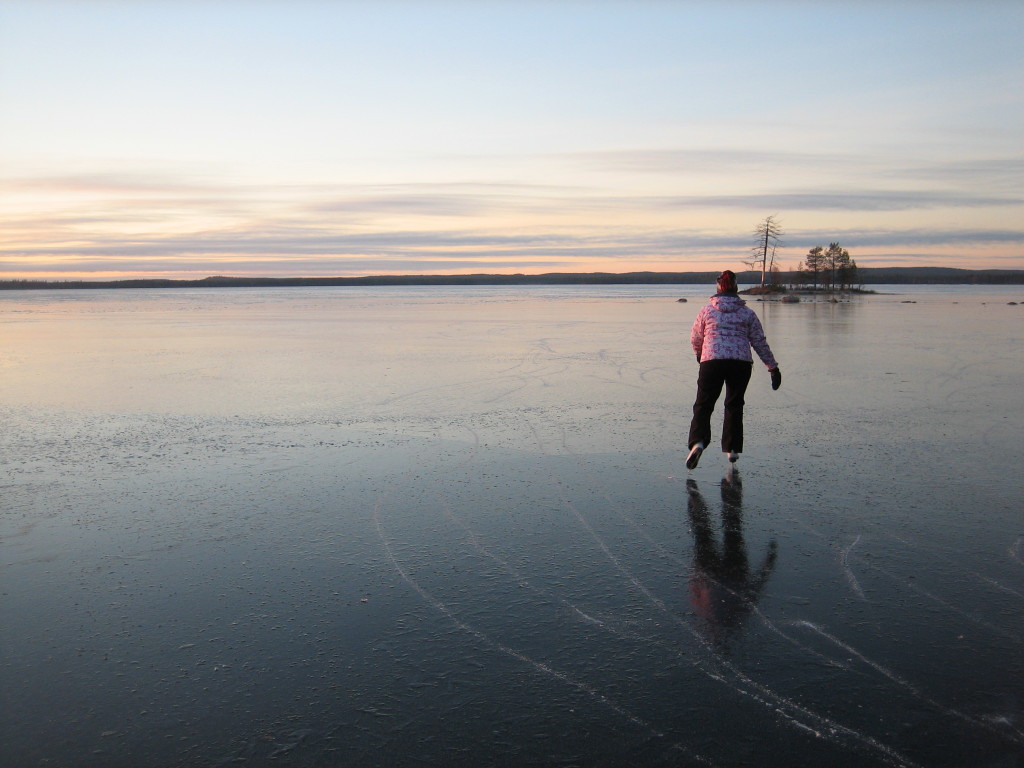


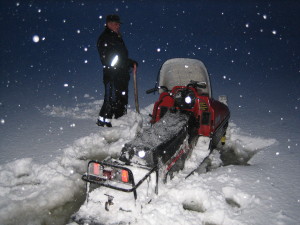
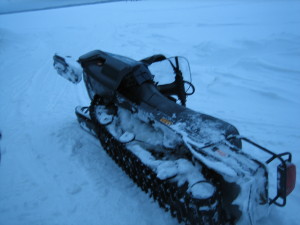
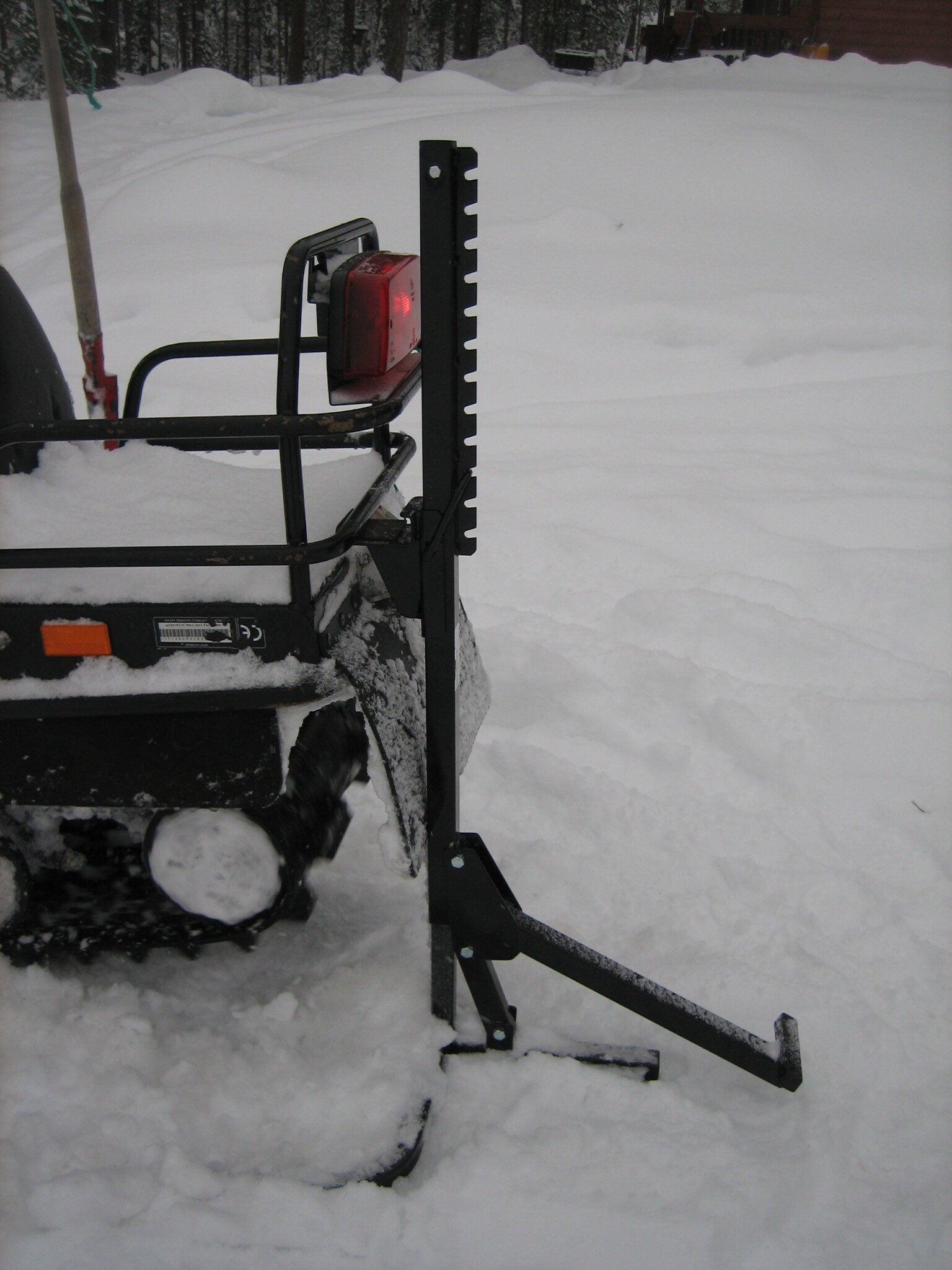


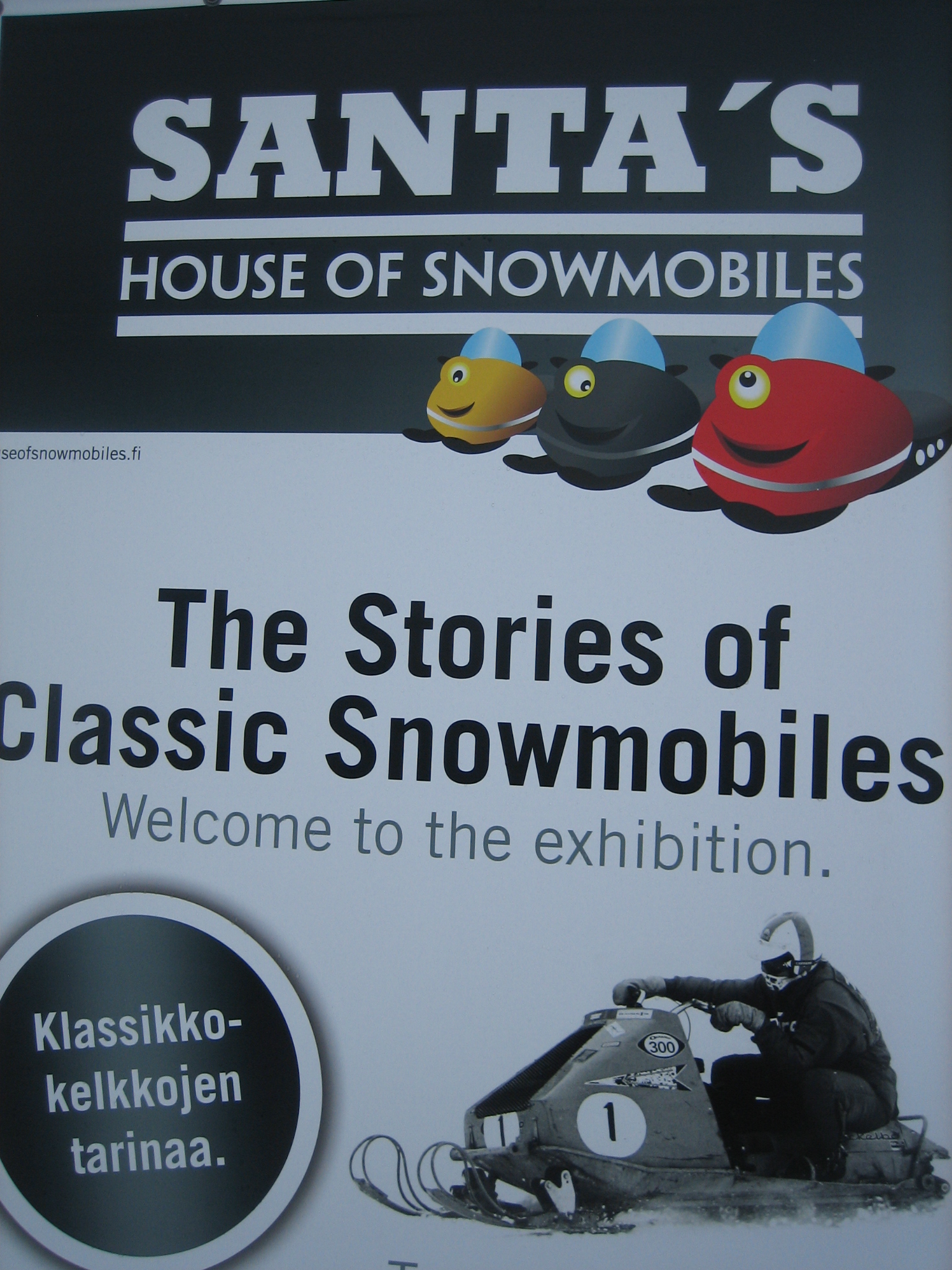

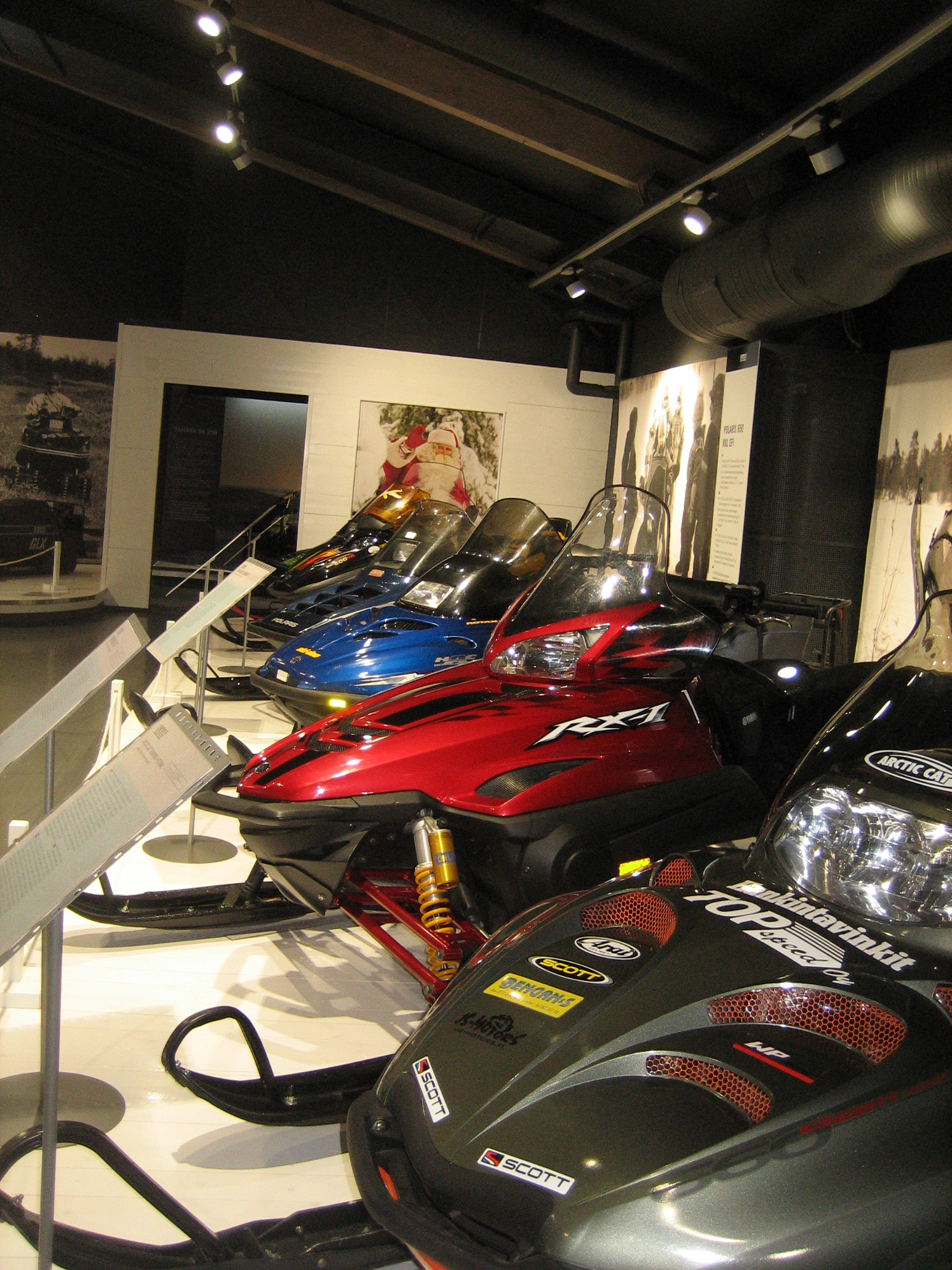


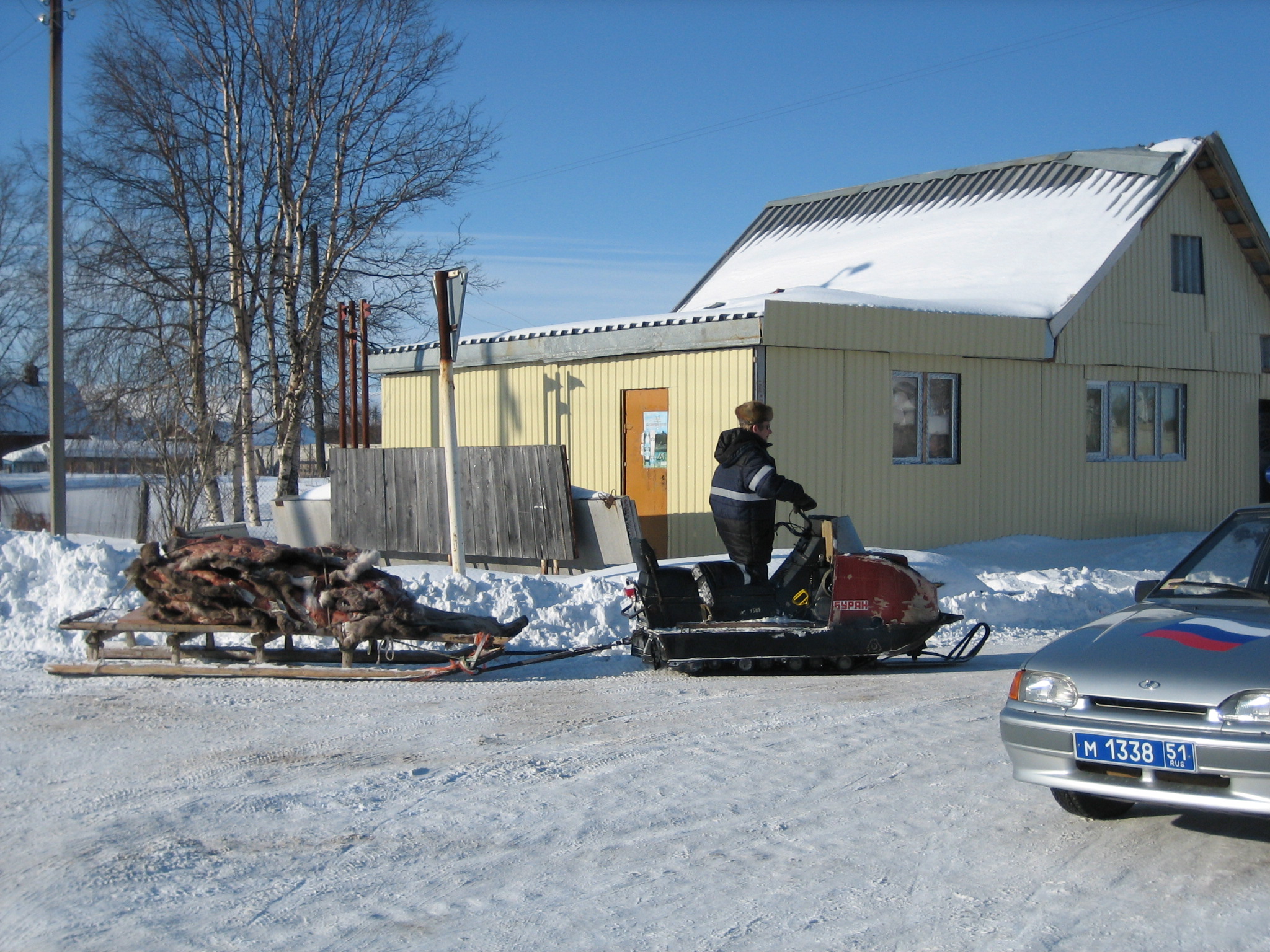
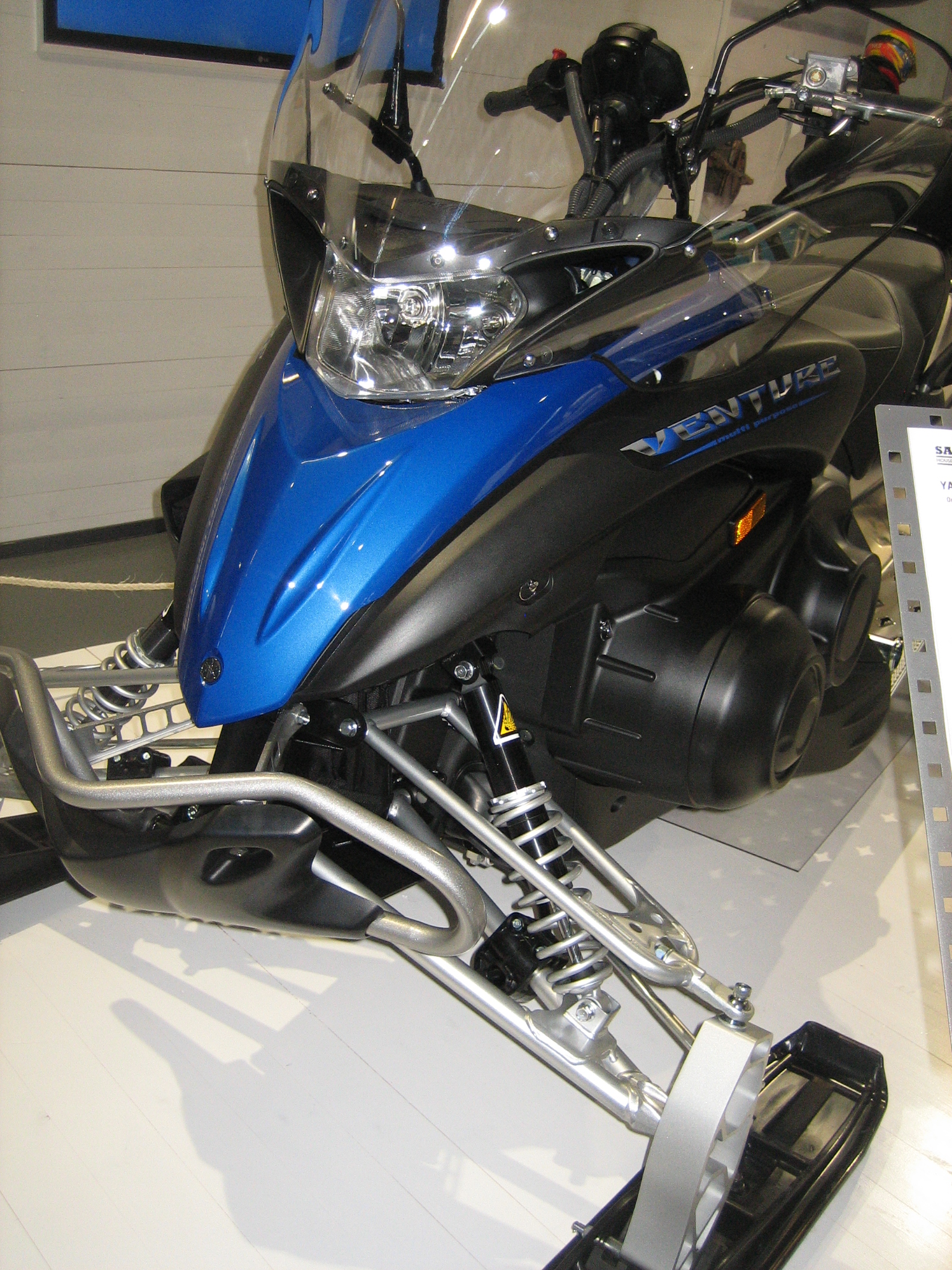
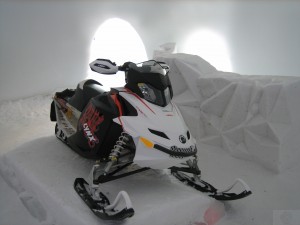

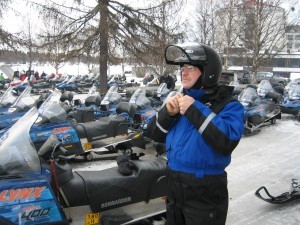
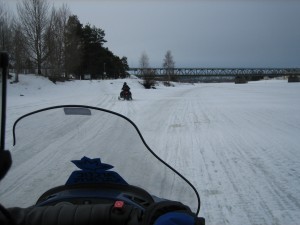
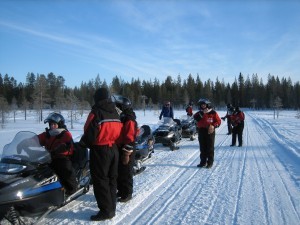
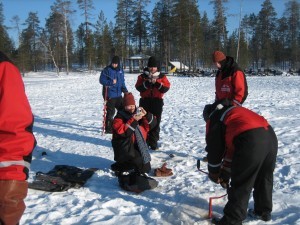 On the ice-fishing safari the tour guide has all the equipment needed and he guides you how to make your hole and start fishing. Catch is not guaranteed, but most likely for patient fishermen. Anyway you can enjoy the wilderness and the beautiful nature around you.
On the ice-fishing safari the tour guide has all the equipment needed and he guides you how to make your hole and start fishing. Catch is not guaranteed, but most likely for patient fishermen. Anyway you can enjoy the wilderness and the beautiful nature around you.
